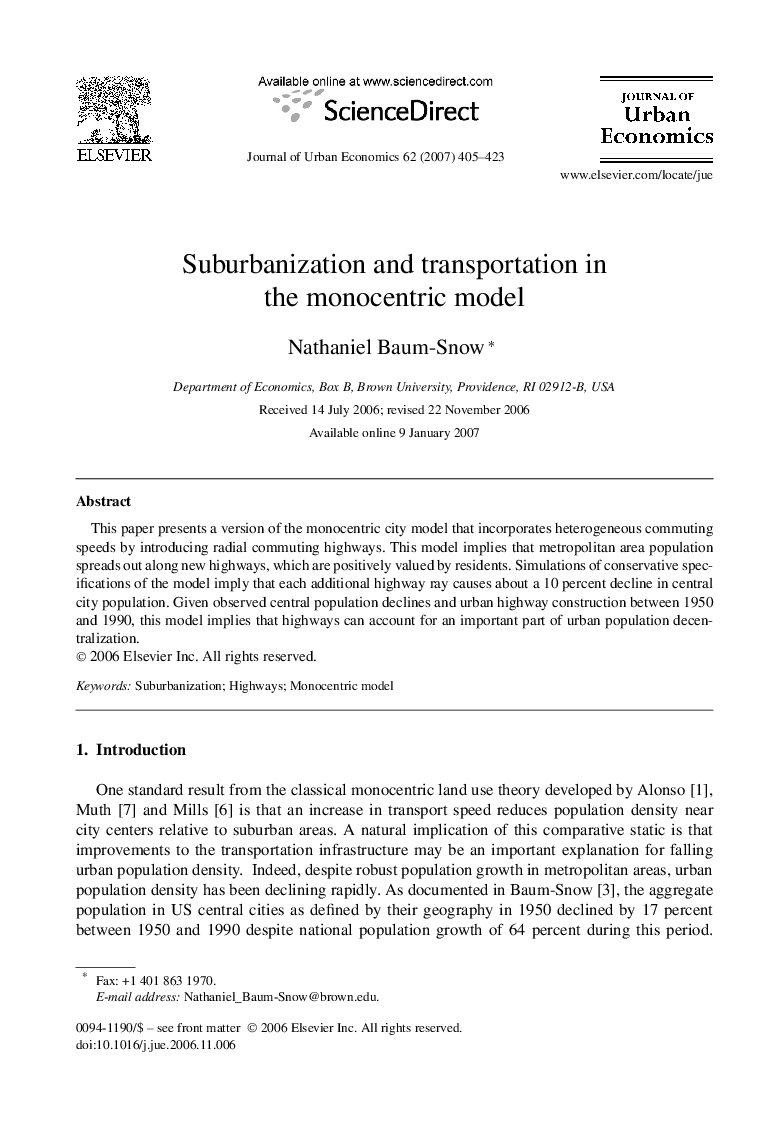| Article ID | Journal | Published Year | Pages | File Type |
|---|---|---|---|---|
| 971993 | Journal of Urban Economics | 2007 | 19 Pages |
Abstract
This paper presents a version of the monocentric city model that incorporates heterogeneous commuting speeds by introducing radial commuting highways. This model implies that metropolitan area population spreads out along new highways, which are positively valued by residents. Simulations of conservative specifications of the model imply that each additional highway ray causes about a 10 percent decline in central city population. Given observed central population declines and urban highway construction between 1950 and 1990, this model implies that highways can account for an important part of urban population decentralization.
Related Topics
Social Sciences and Humanities
Economics, Econometrics and Finance
Economics and Econometrics
